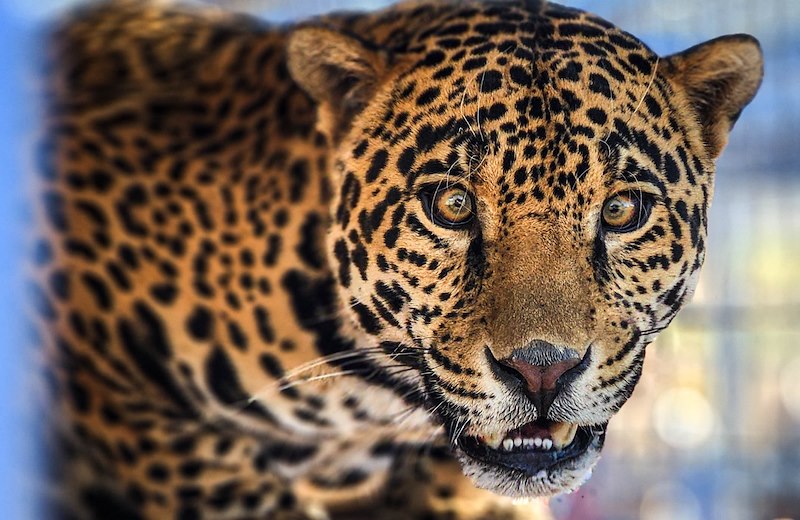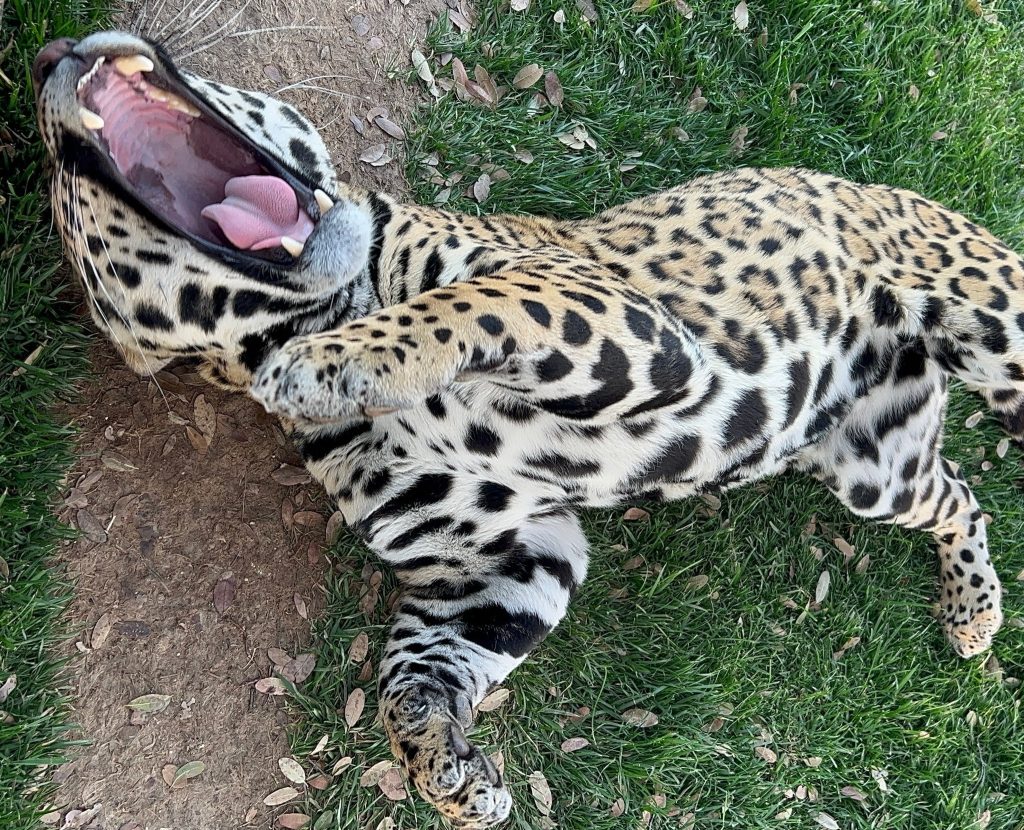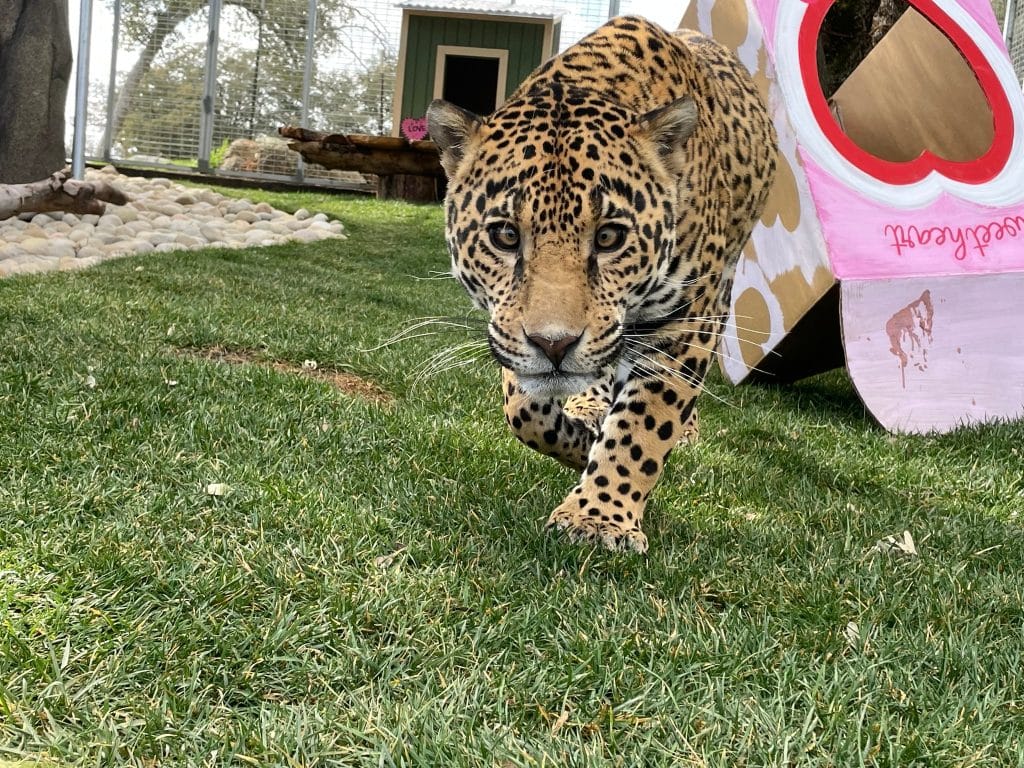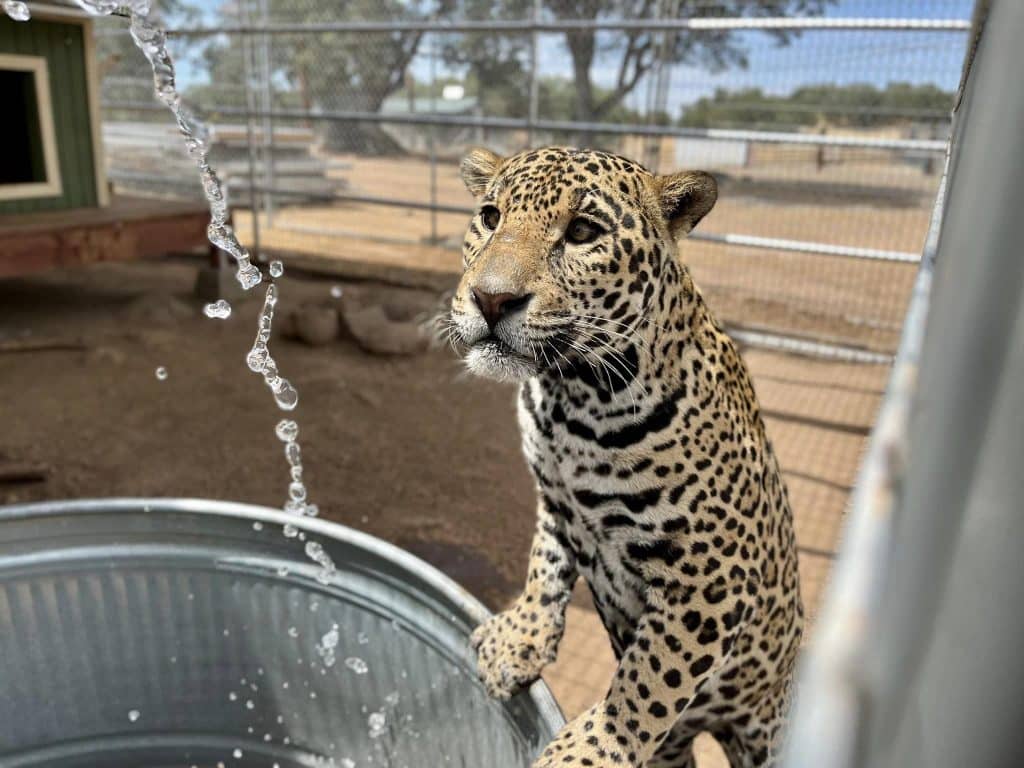
Jaguars are the third biggest cat in the world—only after the lion and tiger—and the largest cats in the Western Hemisphere. They bear a striking resemblance to leopards, which live in Asia and Africa, but Jaguars' spots are more complex. Some of their rosettes (circular markings) have black dots in the middle, a trait less common in leopards. Jaguars also have short legs and larger, rounded heads. This article will help you explore the secret life of jaguars.
Here are some quick facts about these big spotted cats:

Jaguars are highly skilled predators and employ a variety of hunting techniques to secure their prey. Their hunting strategy includes the following abilities:
Jaguars are renowned for their stealth and patience. When they spot a prey, they wait patiently until it comes within striking distance. Their coats make it easy to blend seamlessly in dense vegetation or along riverbanks, so in most cases, the prey won’t notice them until the moment they pounce.
Jaguars are also good at stalking. They can move through their environment with precision and stealth. They rely on their keen senses, particularly their acute hearing and vision, to detect prey from a distance. Once they have identified a target, they will stealthily approach, minimizing any chance of detection until they are within striking range.
One of the jaguar's most formidable weapons is its powerful bite. Jaguars have exceptionally strong jaws, capable of delivering a crushing bite that can pierce through the skulls and necks of their prey. This bite is often aimed at the prey's vital areas, swiftly incapacitating it and ensuring a successful kill.

Jaguars are opportunistic hunters with a diverse diet that includes a wide range of prey species. While they primarily feed on medium-sized mammals such as deer, peccaries, and capybaras, they are also known to hunt smaller animals like birds, fish, and reptiles. Additionally, jaguars have been observed hunting larger prey such as caimans and even livestock in certain areas where natural prey is scarce.
Unlike many domestic species in the cat family, jaguars are skilled swimmers and are known to hunt in water. They are adept at ambushing prey along riverbanks and in bodies of water. These big cats use their powerful limbs to propel themselves and surprise unsuspecting prey from below.
Jaguars possess several unique adaptations that have helped them thrive as apex predators in their native habitats:
Jaguars have a robust and muscular build, with stocky limbs and broad heads. This physical strength enables them to overpower and subdue prey much larger than themselves.
The jaguar's distinctive coat pattern provides excellent camouflage in the dappled light of the forest understory. Their rosette markings break up their outline, making them difficult to spot against the dense vegetation of their rainforest habitats. This camouflage helps jaguars remain undetected by both prey and potential competitors.
In addition to their remarkable hunting abilities and unique adaptations, jaguars exhibit a fascinating behavioral trait: they are both nocturnal and diurnal predators. This means that jaguars are active during both day and night, allowing them to capitalize on a wide range of hunting opportunities and maximize their chances of success.

The IUCN considers jaguars to be near threatened. This means that if the threats are not mitigated, they will eventually become an endangered species. Jaguar populations are declining due to a wide range of reasons.
People hunt jaguars for their distinctive fur, bones, and teeth. These parts are highly prized in some regions for use in traditional clothing and medicine. Jaguars are often killed by cattle ranching farmers in retaliation for predation on livestock. Poaching not only directly reduces jaguar populations but also greatly disrupts their social structure and genetic diversity.
Their natural habitat loss is primarily due to deforestation, agricultural expansion, and urban development. All of these factors pose a significant threat to their survival. Jaguars require large territories with diverse ecosystems to thrive, but as their habitats are fragmented and degraded, their ability to find food, reproduce, and maintain genetic diversity is severely compromised.
Jaguars are often captured from the wild to be sold in the illegal exotic pet trade. This international trade poses a significant threat to jaguar populations, as it contributes to the depletion of wild populations and undermines conservation efforts aimed at their protection.
The fact that jaguars are near threatened underscores the urgency of prioritizing conservation efforts to prevent further decline and potential extinction. With their population already relatively small and facing ongoing threats, it's crucial to take action now to safeguard jaguars and ensure their long-term survival.
Conservation strategies must address the root causes of jaguar habitat loss, which include deforestation, agricultural expansion, and urban development. Efforts to mitigate human-wildlife conflicts are also essential to reduce retaliatory killings of jaguars and promote peaceful coexistence between humans and these apex predators.
There’s also a need for stricter laws to combat poaching and the illegal trade of jaguars and their parts. Local communities should be a part of the conservation efforts, too. They need to be aware of the importance of jaguars and empowered to participate in conservation efforts.
Lions Tigers & Bears is at the forefront of jaguar rescue and conservation efforts.

Eddie the jaguar was bred in captivity by wildlife traffickers who exploited him as a photo opportunity before selling him as a pet. Shortly after his purchase, Eddie was abandoned at our sanctuary gates.
While we provided excellent care, we couldn't share much about his story during the first year due to an investigation by the U.S. Fish & Wildlife Service. In October 2022, two individuals were prosecuted for their involvement in the trafficking of Eddie and other endangered species.
Eddie is now a thriving member of our sanctuary's family, receiving species-specific care and a permanent home. His story highlights the plight of thousands of animals affected by illegal wildlife trafficking, as well as our collective efforts to combat this abuse.
Our collective efforts to combat the abuse of big cats have reached a significant milestone with the passage of the Big Cat Public Safety Act in December 2022. This groundbreaking legislation is a major victory for big cats and their well-being, marking a turning point in our fight against their exploitation and mistreatment. For over a decade, we have been advocating for this type of law to protect big cats like Eddie from private ownership, cub petting, and other forms of exploitation.
The Big Cat Public Safety Act bans the keeping of big cats as pets and prohibits public contact with them. This crucial legislation will make a meaningful difference in the lives of big cats across the country, offering them greater protection and security. Our director, Bobbi Brink, played a pivotal role in getting this landmark legislation passed into law. Her dedication and advocacy were instrumental in achieving this monumental success.
Eddie's story serves as a testament to the urgent need for such laws and reinforces the importance of our ongoing efforts to safeguard these majestic animals. Through this victory, we reaffirm our commitment to creating a safer, more compassionate world for big cats and all wildlife.
You can also support our efforts by volunteering, donating, or spreading awareness about the importance of jaguar conservation. Together, we can make a difference and ensure a brighter future for jaguars and the ecosystems they inhabit.

Ph: 619.659.8078
Fx: 619.659.8841
[email protected]
24402 Martin Way, Alpine, CA 91901